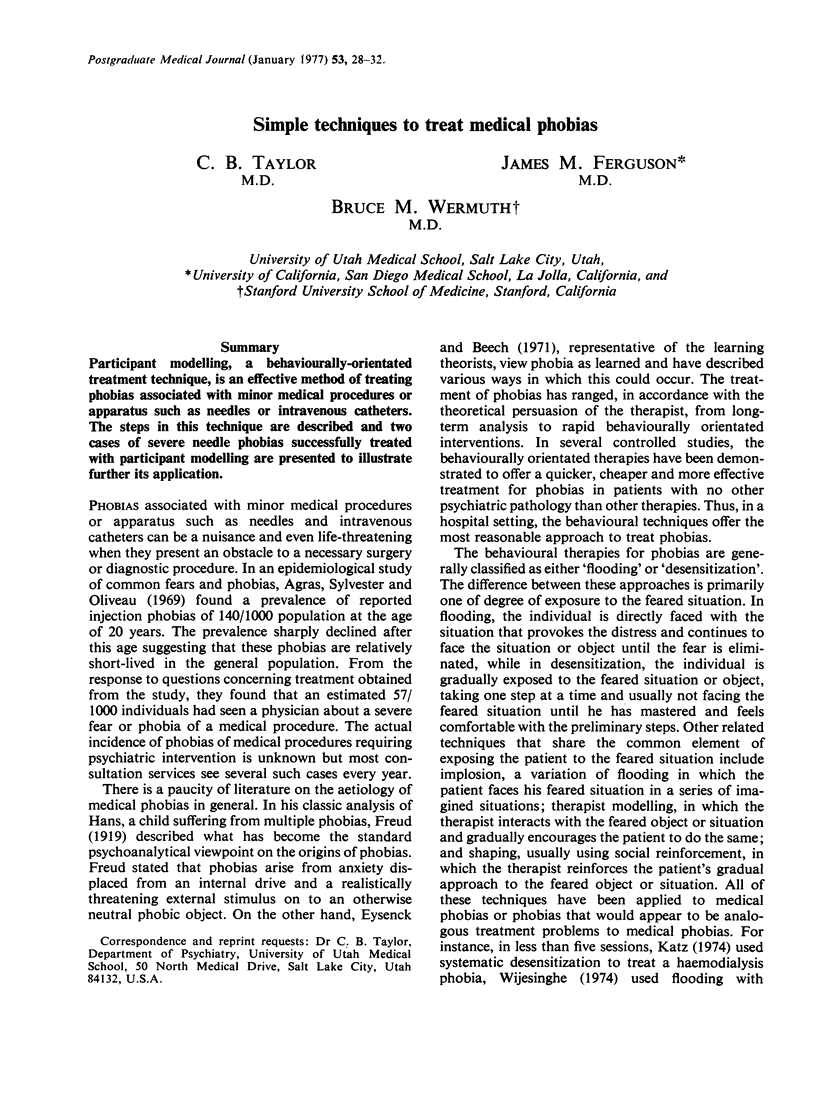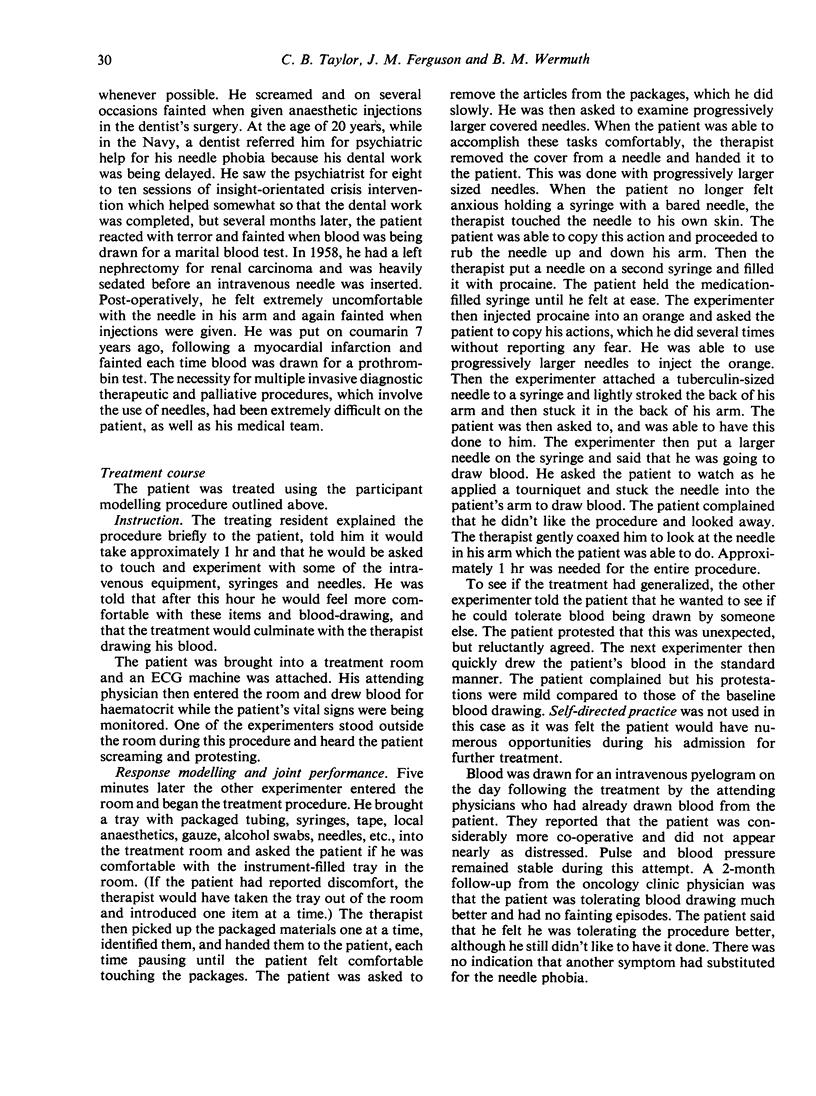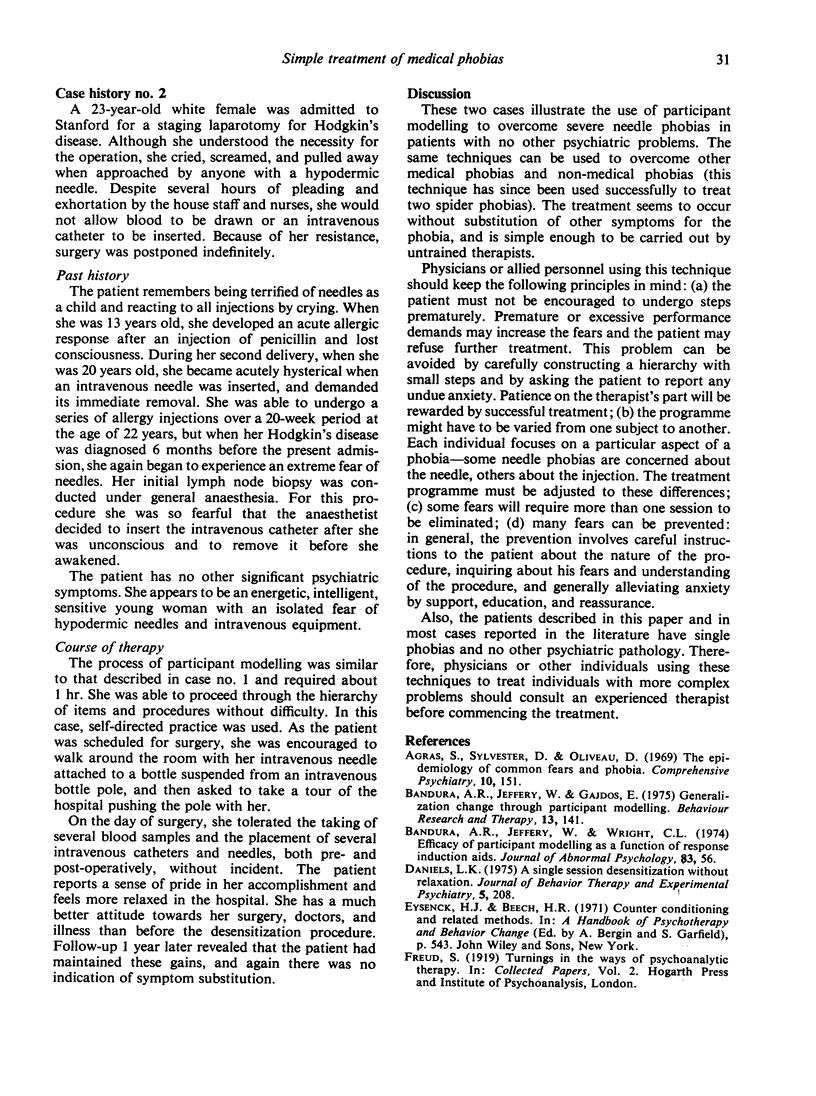Abstract
Participant modelling, a behaviourally-orientated treatment technique, is an effect method of treating phobias associated with minor medical procedures or apparatus such as needles or intravenous catheters. The steps in this technique are described and two cases of severe needle phobias successfully treated with participant modelling are presented to illustrate further its application.
Full text
PDF




Selected References
These references are in PubMed. This may not be the complete list of references from this article.
- Agras S., Sylvester D., Oliveau D. The epidemiology of common fears and phobia. Compr Psychiatry. 1969 Mar;10(2):151–156. doi: 10.1016/0010-440x(69)90022-4. [DOI] [PubMed] [Google Scholar]
- Bandura A., Jeffery R. W., Gajdos E. Generalizing change through participant modeling with self-directed mastery. Behav Res Ther. 1975 Jun;13(2-3):141–152. doi: 10.1016/0005-7967(75)90008-x. [DOI] [PubMed] [Google Scholar]
- Leitenberg H., Agras S., Butz R., Wincze J. Relationship between heart rate and behavioral change during the treatment of phobias. J Abnorm Psychol. 1971 Aug;78(1):59–68. doi: 10.1037/h0031478. [DOI] [PubMed] [Google Scholar]
- Madsen C. H., Jr, Ullmann L. P. Innovations in the desensitization of frigidity. Behav Res Ther. 1967 Feb;5(1):67–68. doi: 10.1016/0005-7967(67)90058-7. [DOI] [PubMed] [Google Scholar]
- Marks I. M. Behaviour therapy. Reduction of fear: towards a unifying theory. Can Psychiatr Assoc J. 1973 Feb;18(1):9–12. doi: 10.1177/070674377301800103. [DOI] [PubMed] [Google Scholar]


